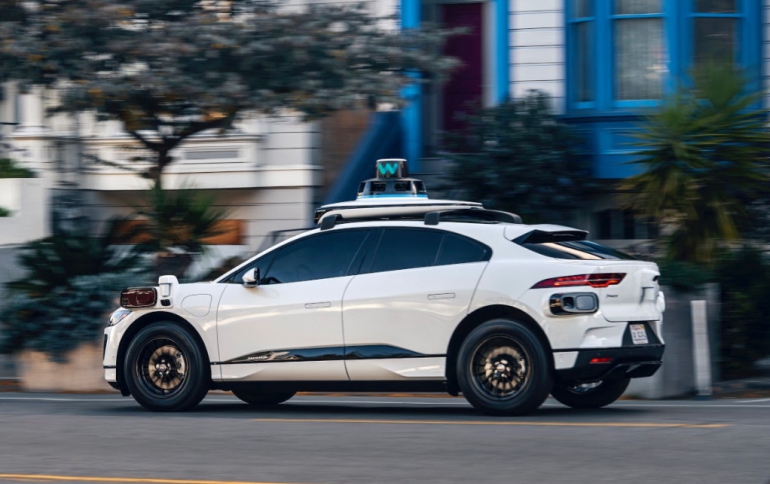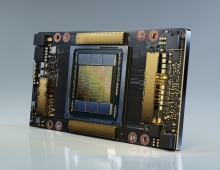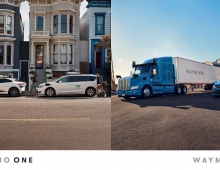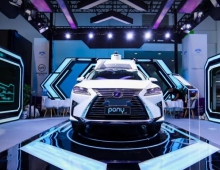
Alphabet's Waymo Outlines Latest Hardware and Software Used in its Cars
Waymo's cars use an integrated system comprised of complimentary sensors to give the company's drivers a comprehensive view of the world so that it can safely navigate complex environments.
Over the past few months, people have begun to notice more of the latest Waymo Driver cruising in the San Francisco Bay Area, especially since the company's all-electric Jaguar I-Paces look a little different thanks to the company's latest hardware sensor suite.
Here’s a look at each of the sensors that form yhe latest generation to inform the Waymo driver.

As one of the Waymo Driver's most powerful sensors, lidar paints a 3D picture of its surroundings, allowing Waymo to measure the size and distance of objects around a vehicle, whether they're up close or over 300 meters away. Lidar data can be used to identify objects driving into the sun on the brightest days as well as on moonless nights.
Waymo's next-generation family of lidars is designed to work together. A new 360 lidar system provides a bird's-eye view of the cars, cyclists, and pedestrians surrounding the vehicle. It not only helps the Waymo driver navigate the complexities of city driving by distinguishing the opening of a car door a city block away, it also gives Waymo's trucks the ability to spot road debris hundreds of meters ahead on the highway, so there's enough time for a Waymo driven truck to stop or make a lane change.
Simultaneously, Waymo says that the new perimeter lidars, placed at four points around the sides of the vehicle, offer "unparalleled coverage with a wide field of view to detect objects closeby." The company says that these short-range lidars provide enhanced spatial resolution and accuracy to navigate tight gaps in city traffic and cover potential blind spots on hilly terrain. As a system, this new family of lidars is a significant upgrade, enhancing the Waymo Driver’s capabilities in a way that will help us as we scale our fleet to more challenging places.
With high-dynamic range and thermal stability over automotive temperature ranges, Waymo's vision system cameras are designed to capture more detail and provide sharper images in the toughest driving environments.
Waymo says that its latest long range cameras and 360 vision system now see much further than before, allowing us to identify important details like pedestrians and stop signs greater than 500 meters away. Through advanced design, including custom lenses and precise optomechanical engineering, Waymo's vision systems enable much higher performance levels than cameras on cars today.
In addition, a new perimeter vision system works in conjunction with Waymo's perimeter lidars to give the Waymo Driver another perspective of objects close to the vehicle. For example, while the perimeter lidars detect obstacles directly in front of the vehicle with precision, the perimeter cameras provide Waymo's machine learning algorithms additional details to reliably identify objects, providing more context to the traffic scene.
Concurrently, the new peripheral vision system helps Waymo reduce blind spots caused by parked cars or large vehicles.
For Waymo's fifth-generation hardware sensor suite, the company has redesigned the architecture, outputs, and signal processing capabilities to create one of the world's first imaging radar system for self-driving - providing unparalleled resolution, range, and field of view to see the whole scene at once. Performance is further improved by overlapping the coverage between radars, and with the cameras and lidars as well.
While traditional automotive radars are capable of tracking moving objects, Waymo's new imaging radar has higher resolution and enhanced signal processing capabilities that allow it to better detect and track objects that are moving, barely moving, or stopped.
Waymo's next-generation radar can also see objects at great distances, including detecting a motorcyclist from hundreds of meters away.
Waymo has already manufactured and integrated the first of its new generation sensors onto our Jaguar I-PACE platform. With the first of these new vehicles, the company has completed comprehensive module-level and system-level tests to ensure its next-generation hardware can withstand whatever the roads throw at it—from stormy weather and salted roads, to extreme heat and dirt storms.





















